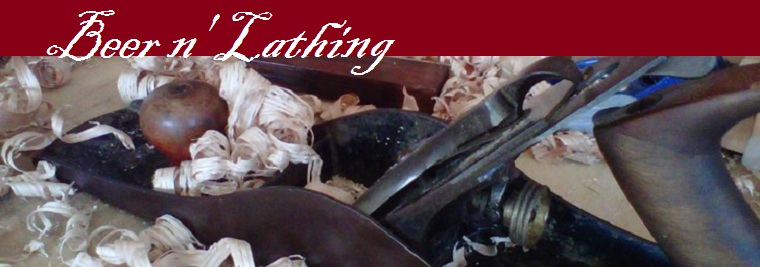Keeping your tools sharp and clean is very important in any shop, but even more so for the green woodworker. My task of modifying the birthing pen for the goat moms-to-be left me with some very sticky tools!
If you have dealt with pine pitch, which would even include anyone who has had to adjust the Christmas tree in the stand. You are familiar with the fact that it sticks to everything and even soap and water did little to clean it off. Simply put, pine pitch isn't soluble in water.
To dissolve pine pitch you can use either alcohol or spirits (mineral or turpentine), either one does the job. I currently have about 2 gallons of denatured alcohol on that needs to be used, so that's what I grabbed.
I also keep a can of used mineral spirits for paint clean-up that I would probably use normally. I do my clean-up and recycle it back into the can.
If you want to go "au natural", I suggest using spirits of turpentine or ether. Neither of these are not mechanically process and 100% safe to use.
Finally, if you wish to learn more about the solubility of different gums and resins, I suggest picking up a copy of Shellac, Linseed Oil, and Paint; Traditional 19th Century Woodwork Finishes by Stephen A. Shephard. This was one of the books I used as a text during my years of teaching preservation.
Cleaning with alcohol is a simple process; simply wet it down and brush it a little to help the alcohol dissolve the resins.
After a few minutes, the resin will be completely dissolved and the alcohol will quickly evaporate, harmless to the finish of the tool.
Another tool I had to clean was a drawknife I had used during a recent shaving horse build. I had planned to use green pine for the leg and pegs, but ultimately only used the pegs. I was sucessful, however, in making the drawknife all icky-sticky in the process.
This is the auger bit I used during the goat pen chore. In the end, I switched to using wire nails, but if you read my earlier post, you already knew that. But as little as I used it, this auger still needed a cleaning.
This is my number 7 bit that I always leave on one of my braces. I use it every spring to bore holes for my maple taps and also for any for drawbore holes at the bench. The old auger bits were numbered according to size, each to the sixteenth of an inch, thus this auger bit is equal to 7/16 inches
After cleaning I like to give the tools a quick rub down with a linseed oil and beeswax mixture. There are many different mixture recipes out there, but there is really no wrong way to do it. I toss them in an old crockpot and cover the beeswax chuncks with lindseed oil. I like the mixture to be a little on the softer side, more oil than wax, so when it cools I will add more of one or the other to my liking.
Clean-up is also when I give the tools a quick sharpening. Do yourself a favor and stop freaking out about how to sharpen. There is no secret to it, just learn a quick repeatable method and do it often.
This is the hatchet after cleaning with the alcohol.
And this is the hatchet after honing and oiling. I even oiled the leather cover this time. NICE!
You may not always have the opportunity to keep your tools in flawless condition. I sometimes have to leave to get things done ans saddly the tools have to wait on the bench until I get back. Do what you can, respect them, and they will last you many years,
Dan.









No comments:
Post a Comment
Let me know what you think! Comments and suggestions are always welcome!